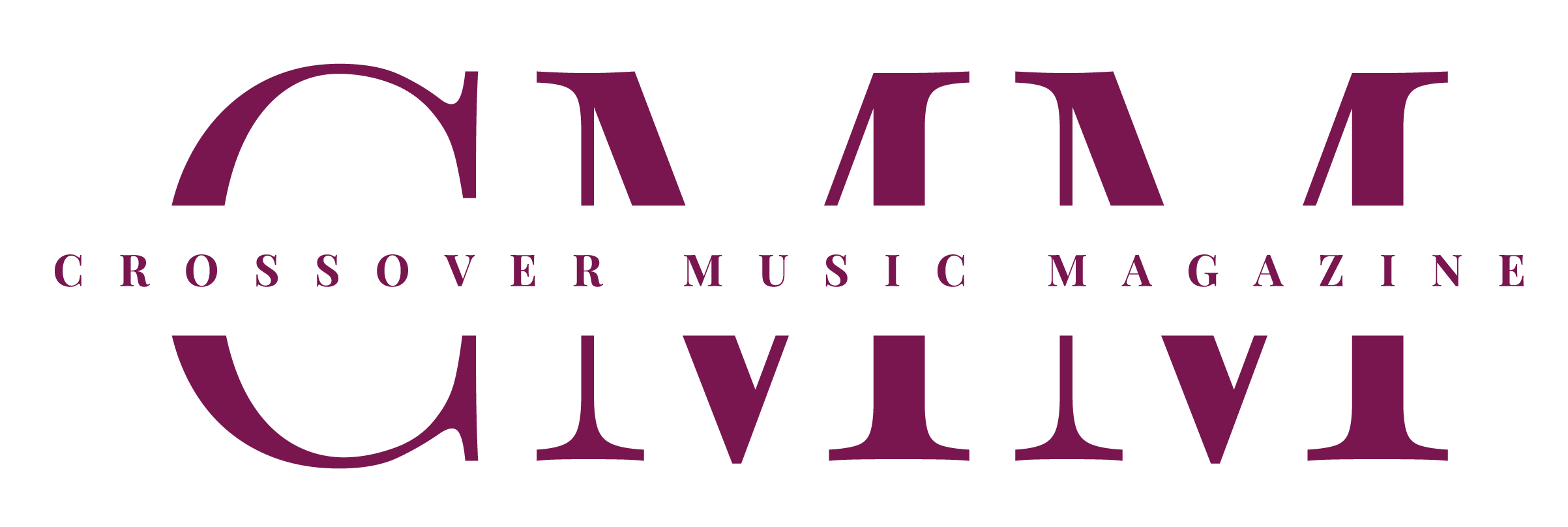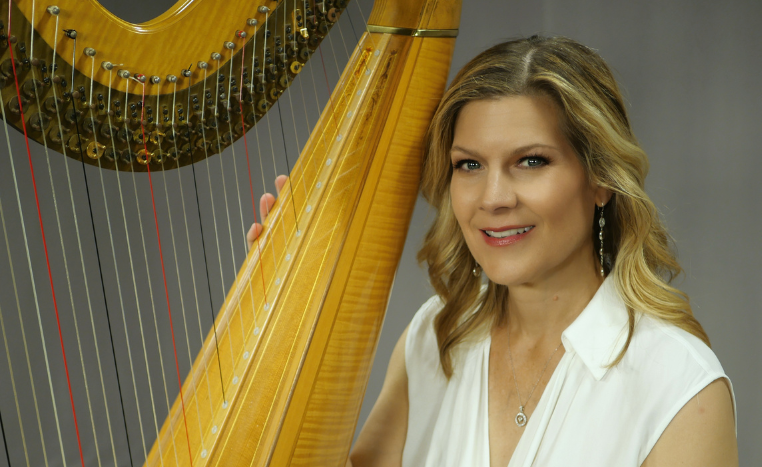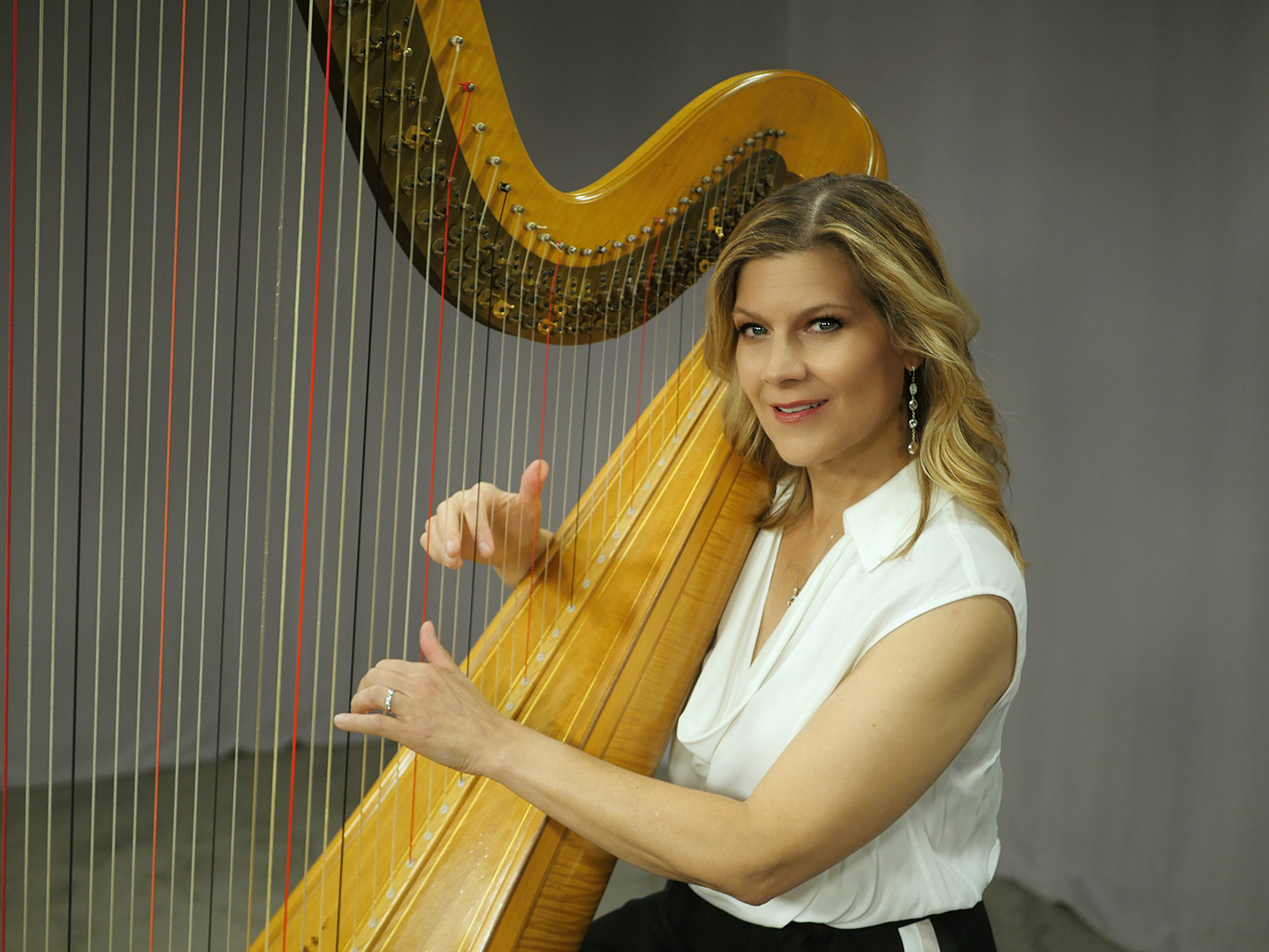Kirsten Agresta Copely’s mother had a passion for rare and unique instruments. “She found an ad in the paper for a used harp, and she thought it would be really interesting to have just for her own enjoyment. Apparently, being the precocious five-year-old that I was at that time, I decided to sit down and start plucking it myself, and she thought it was probably a good idea to get me lessons. So that began my journey.”
The harp Kirsten started on was a troubadour harp, which she describes as “about three-quarters size and without any pedals on the bottom. It has levers, so it’s a little more limited in terms of chromaticism and that type of thing. But for the size that I was, I was dangling off the bench, unable to touch the floor yet. So, it was the perfect size for me at that time.”
Kirsten proved to be something of a child prodigy, performing her first tour at age 14 and winning a bronze medal in the 1st USA International Harp Competition. She trained classically and performed as a soloist for many years. However, when it came time to record her own music, she decided to take a different approach. “Instead of recording classical music, I wanted something that was really my own, something that I could share with the world that would set me apart from other harpists. So I decided to start composing, and it was a really interesting journey.”

Kirsten’s path was also influenced by the popular legends she worked with, including Beyoncé, Kristin Chenoweth, Jay-Z, Tony Bennett, Enya, Michael Bublé, Andrea Bocelli, Kanye West, and more. “Those experiences were very defining, especially at that time in my life. I started playing with Kanye West back in 2005 at Live 8 in Philadelphia. Your name gets passed around, and artists know who you are and invite you to their gigs—it was a really exciting time. One of my favorite memories was playing with Jay-Z at Carnegie Hall. We were taking a break, and as they played a track to check the levels, there was this little quiver sound on it. I thought, ‘Oh, I can do that on the harp!’ So, I was mic’d and amplified, and I just did the quiver. Everyone stopped and turned around, saying, ‘What was that?’ They decided to put it in the show! So there were chances to add my own flair to some of the performances.”
In 2023, Kirsten released her Grammy-nominated album, Aquamarine. “The album was actually written as an homage to my late mother and our shared love of the ocean and its protection. All the song titles have ocean-related themes, like I Am Water, Sea Idyll, Naiads, and Into the Mist. They’re inspired by my personal journey with my mom and the times we spent near blue spaces.”
With a strong ambient influence, Aquamarine is as calming as the gentle waves. Kirsten strongly believes in the power of music to alleviate stress. “I personally listen to ambient music when I need to lower my blood pressure, so there was definitely a connection there for me to write that kind of music to help others as well. I think the harp, in general, has a very soothing sound. It can be percussive if you want it to be, but it can also be mellow and soothing.”
Over time, Kirsten has learned to appreciate silence as much as the notes themselves. “One of the challenges I faced when I first started composing was leaving space in the music, allowing room for the ambient part. This way, the mixing process could add what I was looking for to make the song feel whole. When people tell me they’ve found peace listening to the music, or that it helped them with a grief they’re struggling with, it means a lot to me and makes it all worthwhile.”
Aquamarine also incorporates a unique mix of sounds crafted as part of its sonic palette. “A lot of the sounds you hear are created through the mixing process. The only real effects I use in the compositional part are harmonics, where you pluck the string and it sounds an octave higher, creating a bell-like effect. I use a lot of harmonics because I like the effect and the ability to extend it into something different. The mixing process really brings out the special ‘sauce’ in the music. I don’t use many traditional harp effects, like sweeping the strings or the quiver, because they don’t fit into what I’m writing.”
Aquamarine is also a visual experience. “I collaborated with Laurie Olinder, a New York-based visual artist, who created a beautiful, hour-long visual experience with undulating patterns of abstract water images. It adds an immersive element to the show that I think is really compelling.”
Catch Kirsten Agresta Copely’s performance and visual journey on Thursday, November 7th, at 6 PM EDT on YouTube or Channel 10 in Ansonia, Beacon Falls, Bethany, Derby, Naugatuck, Oxford, Seymour, and Shelton, Connecticut.








